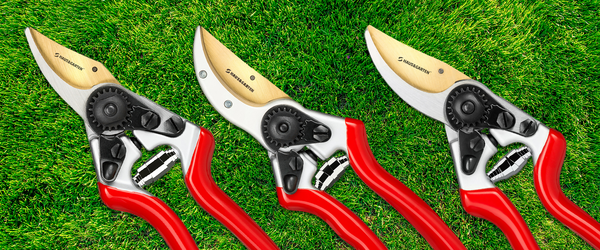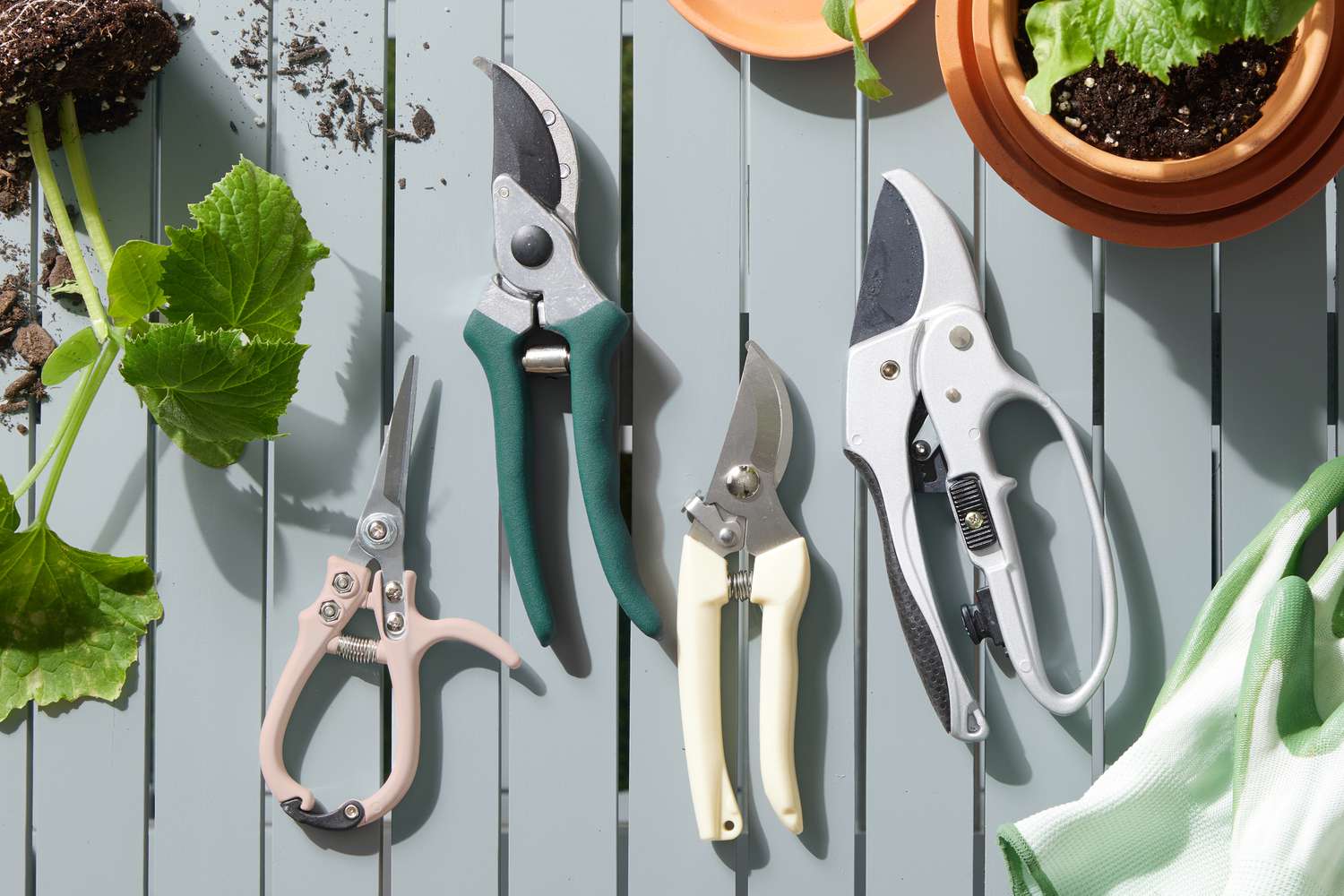As an Amazon Associate, I earn from qualifying purchases.
Choosing the right pruning shears can make gardening easier. Good shears help keep plants healthy and beautiful.
Gardening enthusiasts know that not all pruning shears are the same. Some are designed for specific tasks, while others offer comfort and ease of use. It’s important to pick the right shears to suit your needs. Factors like blade type, handle design, and cutting mechanism play a crucial role.
By understanding these elements, you can make an informed decision. This guide will help you navigate the options and select the best pruning shears for your garden. Let’s dive in and explore the key aspects to consider.
Introduction To Pruning Shears
Pruning shears are important tools for gardening. They help cut and shape plants. Good shears make gardening easier. They help keep plants healthy. Choosing the right shears is essential. They come in different types. Each type has its own use.
Importance In Gardening
Healthy plants need regular trimming. Pruning shears help cut dead branches. They also shape plants. This helps them grow better. Good shears make clean cuts. Clean cuts heal faster. This keeps plants strong. Gardening becomes easier with the right tools.
Types Of Pruning Shears
| Type | Use |
|---|---|
| Bypass Shears | For live branches |
| Anvil Shears | For dead branches |
| Ratchet Shears | For thick branches |

Credit: www.hausandgarten.com
Key Features To Consider
High-quality pruning shears have strong blades. Steel blades are the best. They stay sharp for a long time. Some blades have a coating. This helps them cut smoothly. Titanium coatings are very good. They last longer and do not rust. Carbon steel blades are very sharp. But they can rust if not cared for.
Good handles make pruning easy. Ergonomic handles fit your hand well. They reduce strain and fatigue. Non-slip grips help you hold the shears. This is important for safety. Adjustable handles can fit different hand sizes. Look for cushioned handles. They make cutting more comfortable.
Different Types Of Blades
Bypass blades are like scissors. They have two sharp blades. One blade moves past the other. They make clean cuts. They are good for live plants. They don’t crush stems. Bypass shears are great for flowers and green branches.
Anvil blades have one sharp blade. It closes on a flat surface. They cut by pressing down. They are good for dry, dead branches. They can crush green stems. Use anvil shears for hard, woody branches. They are strong and durable.
Ergonomics And Comfort
The grip of pruning shears should be comfortable. Rubber or cushioned grips can reduce hand fatigue. Handles should fit well in your hand. Too big or too small handles can cause pain. Non-slip materials are also important for safe use. Test the grip before buying if possible.
Shears should not be too heavy. Heavy shears can tire your hand quickly. Balance is key. The tool should feel even in your hand. If one side is heavier, it will be hard to use. Try holding the shears before buying. Make sure they feel right for you.
Durability And Maintenance
Rust resistance is key for pruning shears. Shears with stainless steel blades resist rust well. Carbon steel blades can rust if not cared for properly. Always dry your shears after use. Store them in a dry place. This helps keep rust away.
To keep shears sharp, regular sharpening is needed. Use a sharpening stone or a special tool. Clean the blades after every use. Wipe them with a damp cloth. Remove any sap or dirt. This prevents blade damage and keeps them sharp. Oiling the blades helps too. It reduces friction and keeps the blades moving smoothly.
Safety Features
Pruning shears should have a good locking mechanism. This helps keep the blades closed when not in use. It prevents accidents and keeps everyone safe. Look for shears with an easy-to-use lock. It should be simple to open and close. You do not want a lock that is too hard to use. That could be dangerous.
Hand guards protect your fingers while you work. They keep your hands safe from sharp blades. Good hand guards should be strong and durable. They should not get in the way of your work. Many shears come with built-in hand guards. Check to see if they are comfortable and fit well in your hand.
Choosing The Right Size
Pruning shears should fit your hands comfortably. For small hands, find shears that are lightweight. This helps to avoid strain. Look for handles that are narrow. This makes it easier to grip. Choose shears with an ergonomic design. It reduces hand fatigue. Avoid large and heavy shears. They can be hard to control.
People with large hands need different shears. Find shears that are sturdy and durable. Large handles give a better grip. Look for shears with adjustable grips. This ensures comfort. Heavy-duty shears can handle tougher branches. Make sure the shears open wide. This helps in cutting larger branches.
Budget And Quality Balance
Affordable pruning shears can do a good job for simple tasks. They may not last long if used often. Look for shears with stainless steel blades. They are less likely to rust. Plastic handles can be comfortable but may break. Rubber handles offer a better grip. Always check user reviews before buying.
High-end pruning shears last longer and cut better. They often have carbon steel blades, which stay sharp. Ergonomic handles reduce hand strain. Some high-end models come with replaceable blades. These shears are worth the cost if you garden a lot.
User Reviews And Recommendations
Many gardeners love the Fiskars Steel Bypass Pruning Shears. They say it is easy to use. It cuts cleanly. Another favorite is the Felco F-2 Classic Manual Hand Pruner. Many users find it very durable. It lasts for many years. The Corona RP 3230 Ratchet Pruner is also popular. It helps those with weak hands. It needs less force to cut branches.
Experts recommend shears with strong blades. Stainless steel is a good choice. It stays sharp longer. Ergonomic handles are important too. They reduce hand strain. Some experts suggest bypass shears. They make cleaner cuts. Anvil shears are good for dead wood. Check if the shears have a safety lock. It prevents accidents.

Credit: m.youtube.com

Credit: m.youtube.com
Frequently Asked Questions
What Are Pruning Shears Used For?
Pruning shears cut small branches and stems. They shape plants and remove dead growth.
How Do You Choose The Best Pruning Shears?
Look for sharp blades, comfortable handles, and sturdy construction. Test for ease of use.
What Types Of Pruning Shears Are Available?
There are bypass, anvil, and ratchet shears. Each has unique uses and benefits.
How Often Should Pruning Shears Be Sharpened?
Sharpen pruning shears every few months. Dull blades can damage plants.
Can Pruning Shears Cut Thick Branches?
Pruning shears handle small to medium branches. For thick branches, use loppers or a pruning saw.
Conclusion
Choosing the right pruning shears can make gardening easier and more enjoyable. Remember to consider blade type, handle comfort, and overall quality. Keep your shears sharp and clean for best results. With the right tools, pruning becomes a simple task.
Happy gardening!

